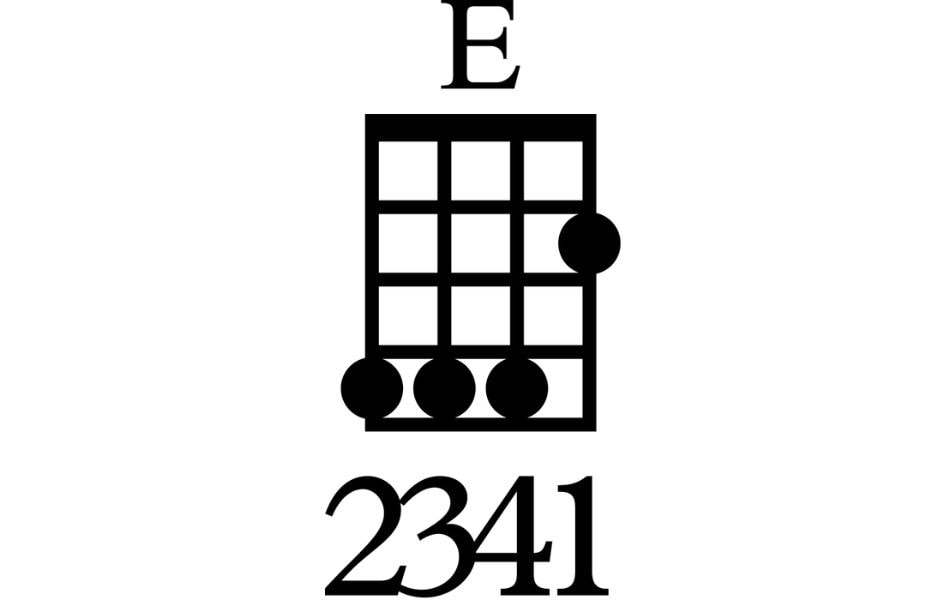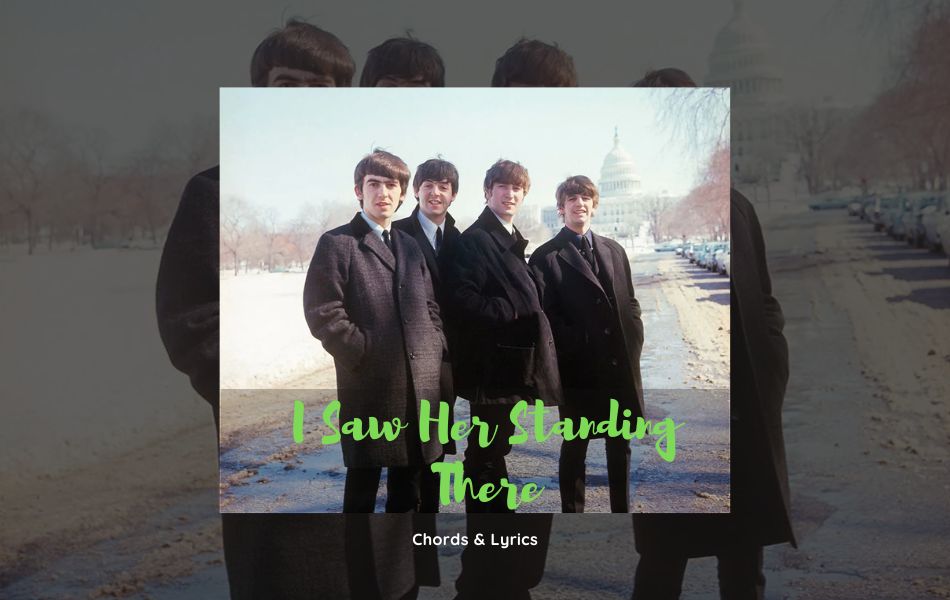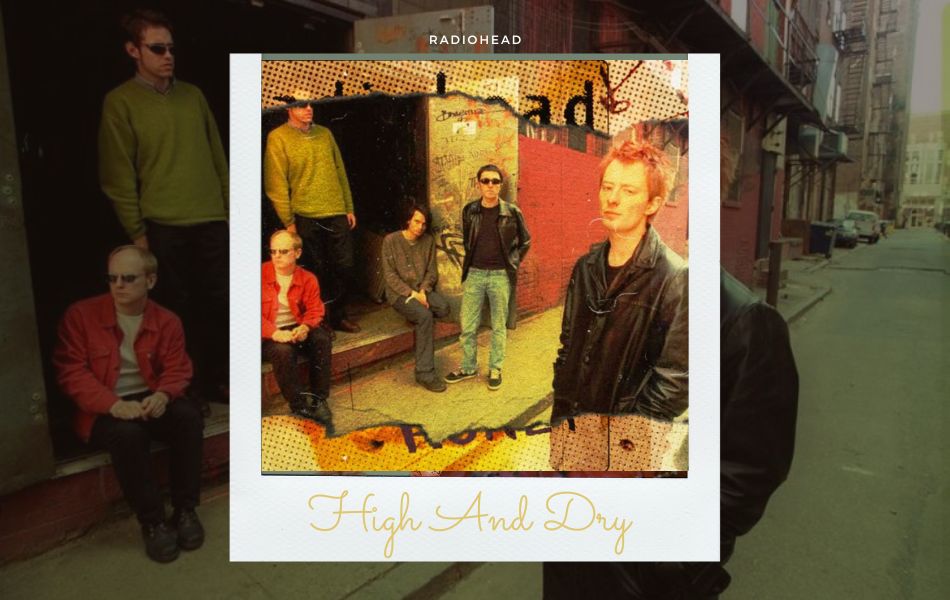How To Play E Major Ukulele Chords
Track Info

Song:
Artist:
Writers:
Producers:
Album: Updating
Chords Info
Tuning
CapoNo Capo
Chords Used
Mastering the E Major chord on the ukulele opens up a world of musical possibilities. Whether you're a beginner or looking to enhance your ukulele skills, understanding how to play E Major chords is a fundamental step. In this guide, we'll delve into the techniques and variations that will empower you to skillfully play the E Major chord on your ukulele. Let's embark on this musical journey and unlock the beauty of E Major together.
Understanding about ukulele and chord
The ukulele is a small, four-stringed musical instrument that originated in the 19th century in Hawaii. It is a member of the guitar family and typically comes in four sizes: soprano, concert, tenor, and baritone. The ukulele is known for its bright and cheerful sound, and it has gained popularity worldwide for its portability and ease of play.
Chords are combinations of notes played together to create harmony. On the ukulele, E chords are formed by pressing down on the frets with one hand while strumming or plucking the strings with the other hand. Each chord is named after the note that serves as its root, and different combinations of notes give each chord its unique sound.
Some symbols help readers understand the ukulele chord chart
- G: 4th string.
- C: 3rd string (the lowest tone).
- E: 2nd string.
- A: 1st string (which is the highest-tone string).
O - If there's a circle above the string, it indicates playing that string in an open position.
X - An "x" above the strings signifies either not playing that string or muting it during play.
- 1 = index finger.
- 2 = middle finger.
- 3 = ring finger.
- 4 = pinky finger.
How to play E major ukulele chord
Variation 1
In this initial variation, when playing the E major chord on the ukulele, position your middle finger on the 4th fret of the highest G-string, place your ring finger on the 4th fret of the C-string, and place your index finger on the 2nd fret of the lowest A-string. Allow the E-string to ring openly.
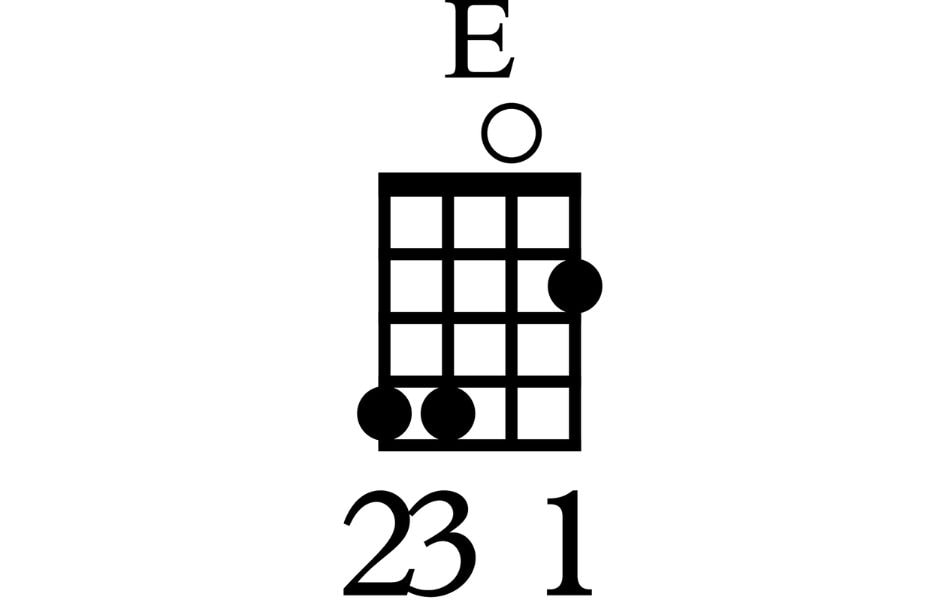
Variation 2
For the second variation of the E major chord on the ukulele, create a barre by pressing your index finger across the top G-string, C-string, and E-string at the 4th fret. Simultaneously, position your little finger on the 7th fret of the bottom A-string.
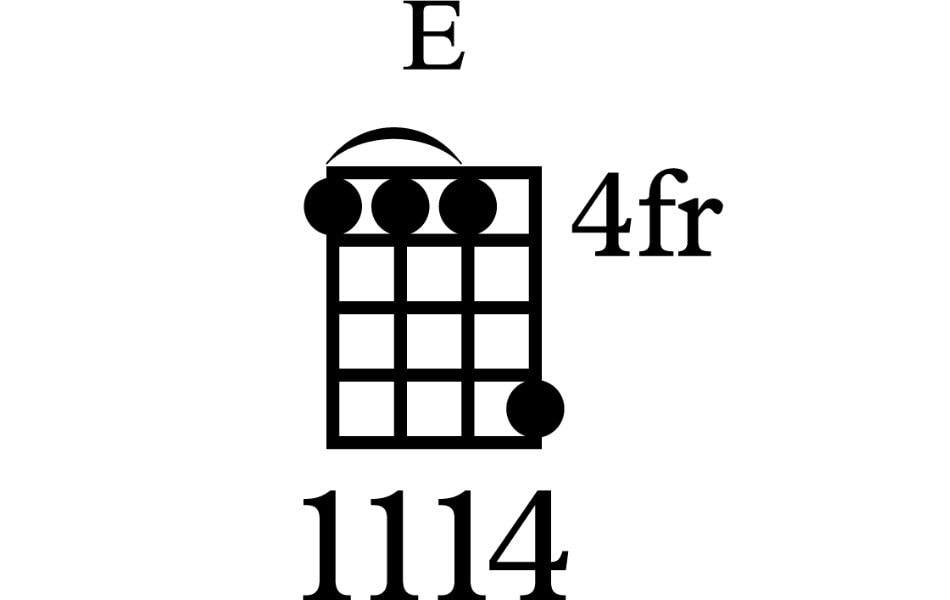
Variation 3
In the third and most widely used variation of playing the E major chord on the ukulele, create a barre by pressing your index finger across all four strings at the 2nd fret. Additionally, form another barre by pressing your ring finger on the top G-string, C-string, and E-string at the 4th fret.
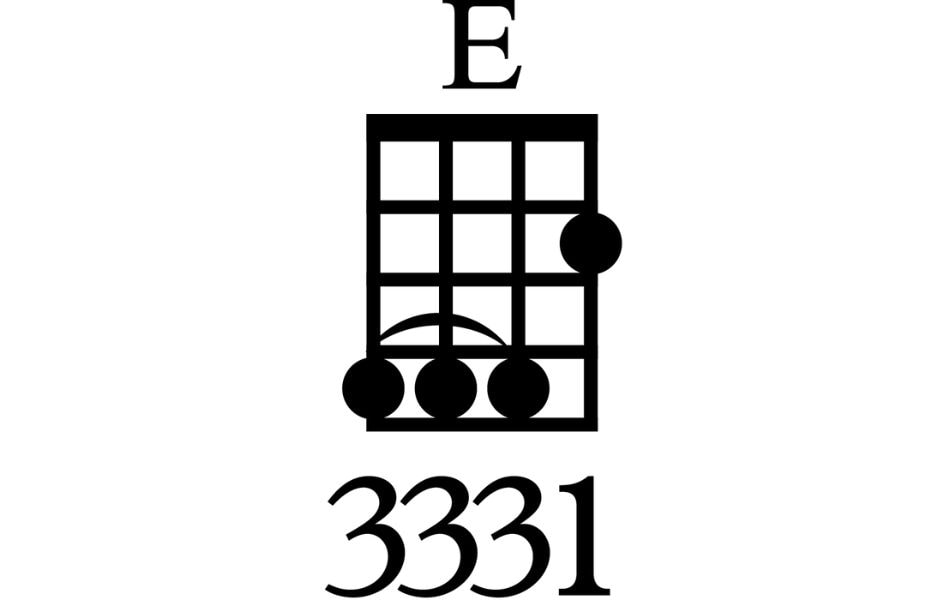
Variation 4
For the fourth variation of playing the E major chord on the ukulele, position your fingers as follows: place your middle finger on the 4th fret of the top G-string, your ring finger on the 4th fret of the C-string, your little finger on the 4th fret of the E-string, and your index finger on the 2nd fret of the bottom A-string.
